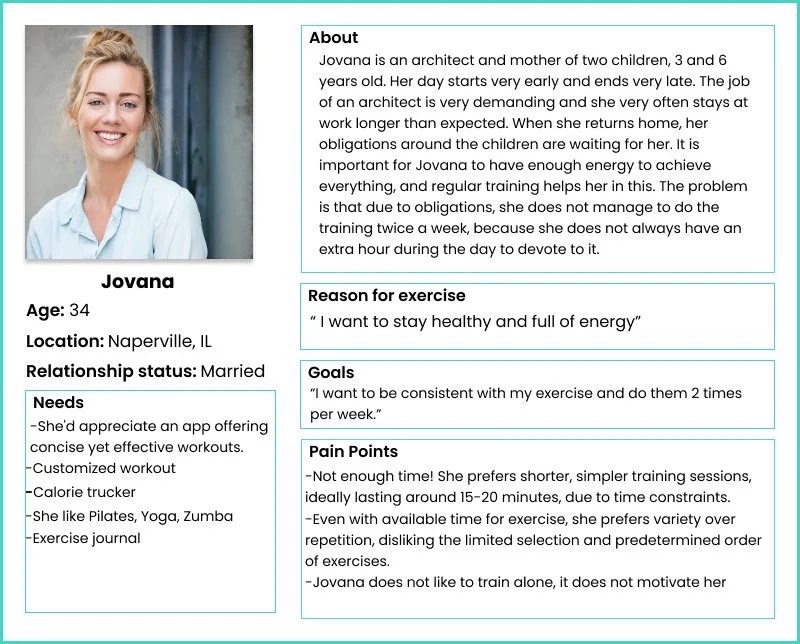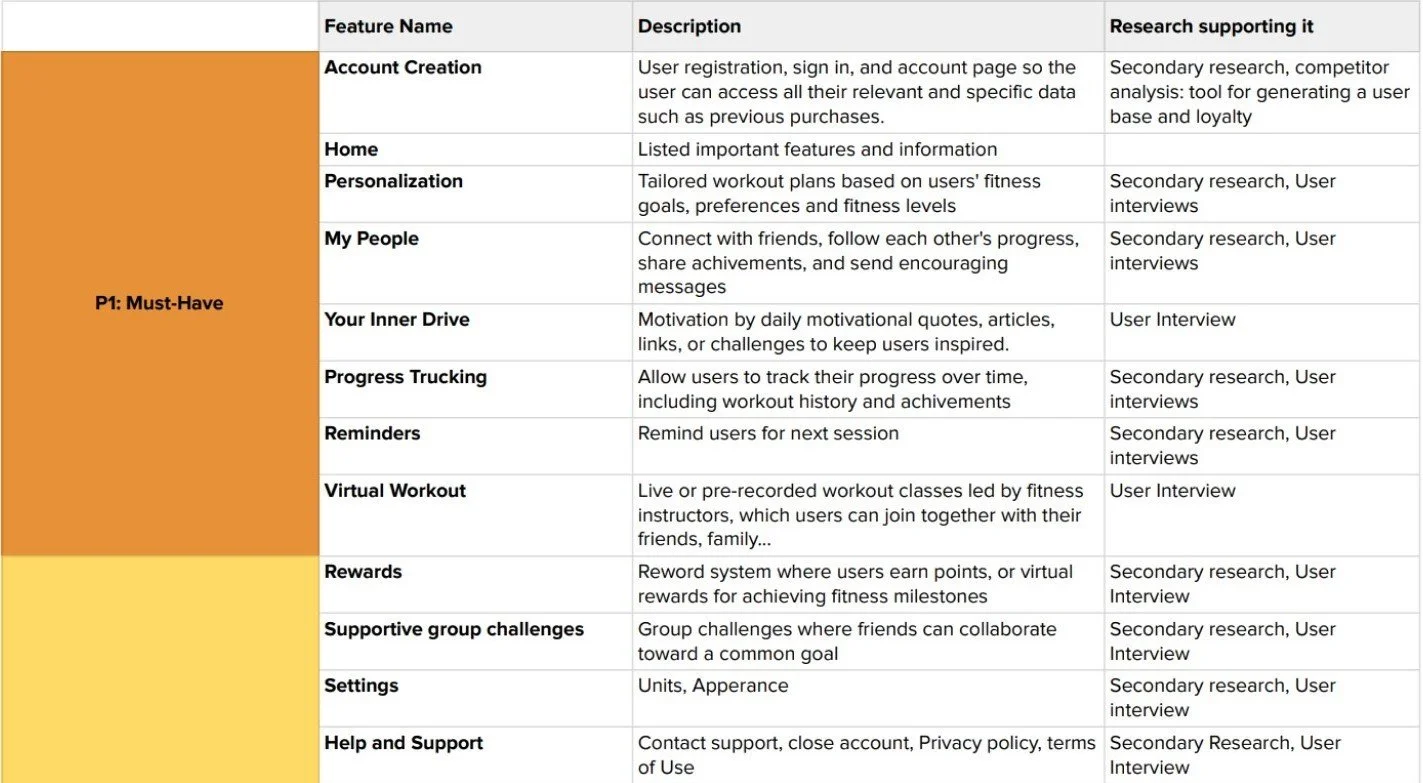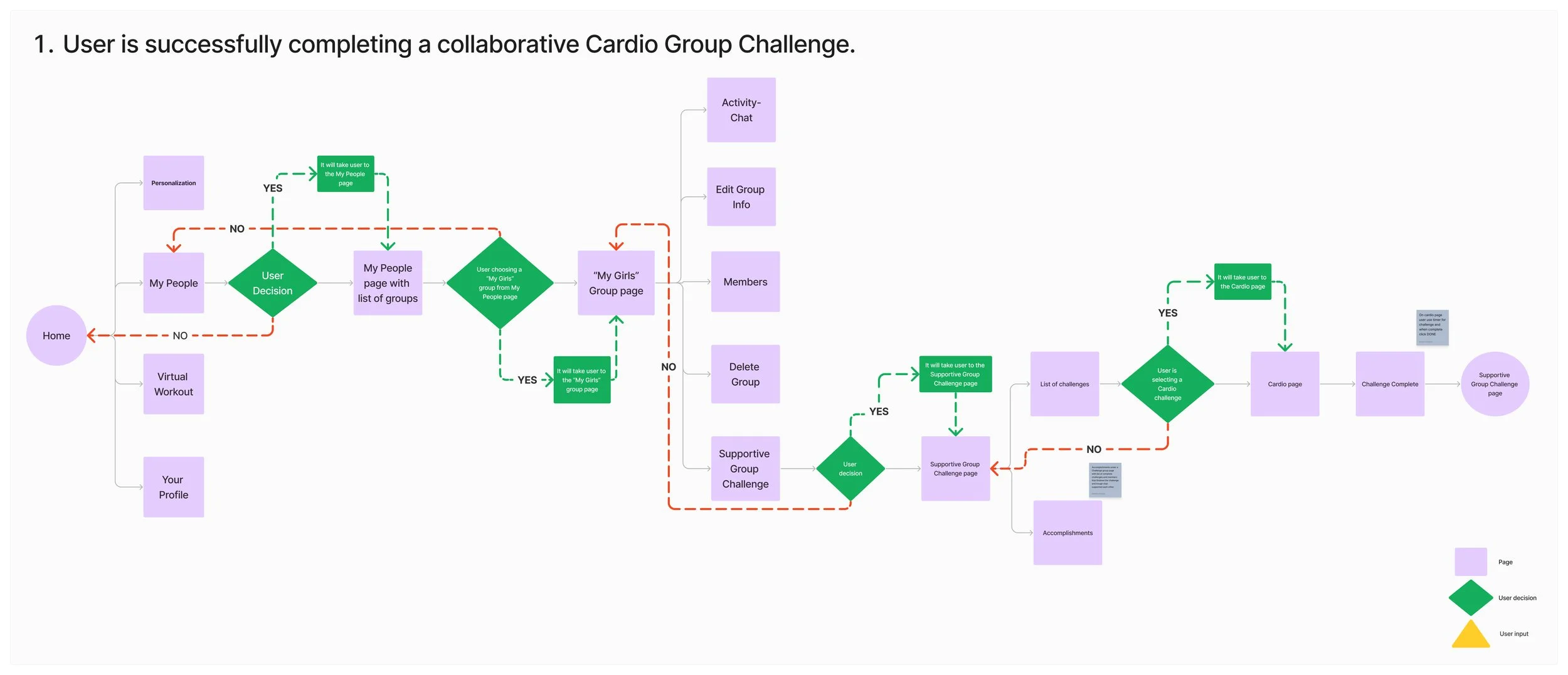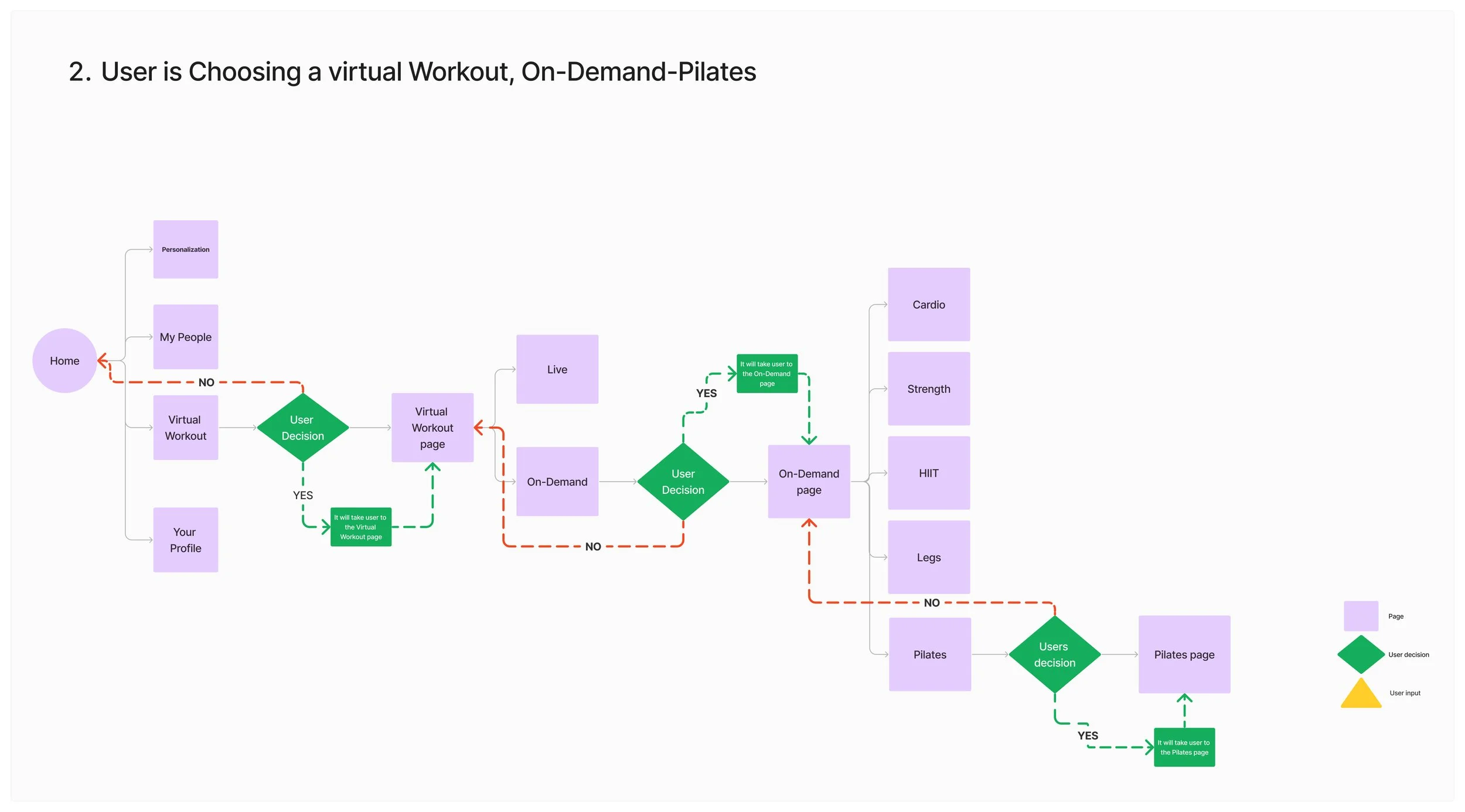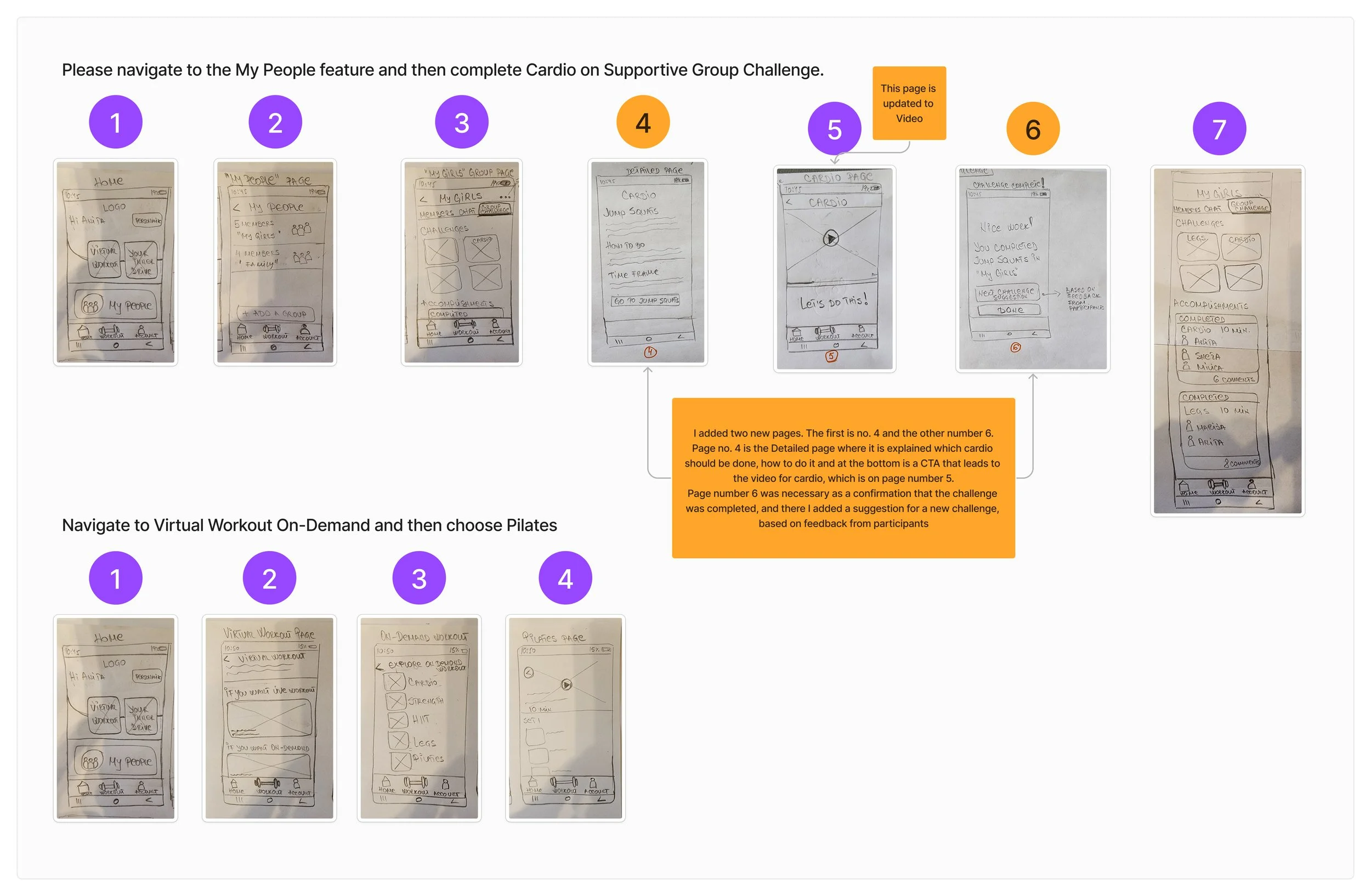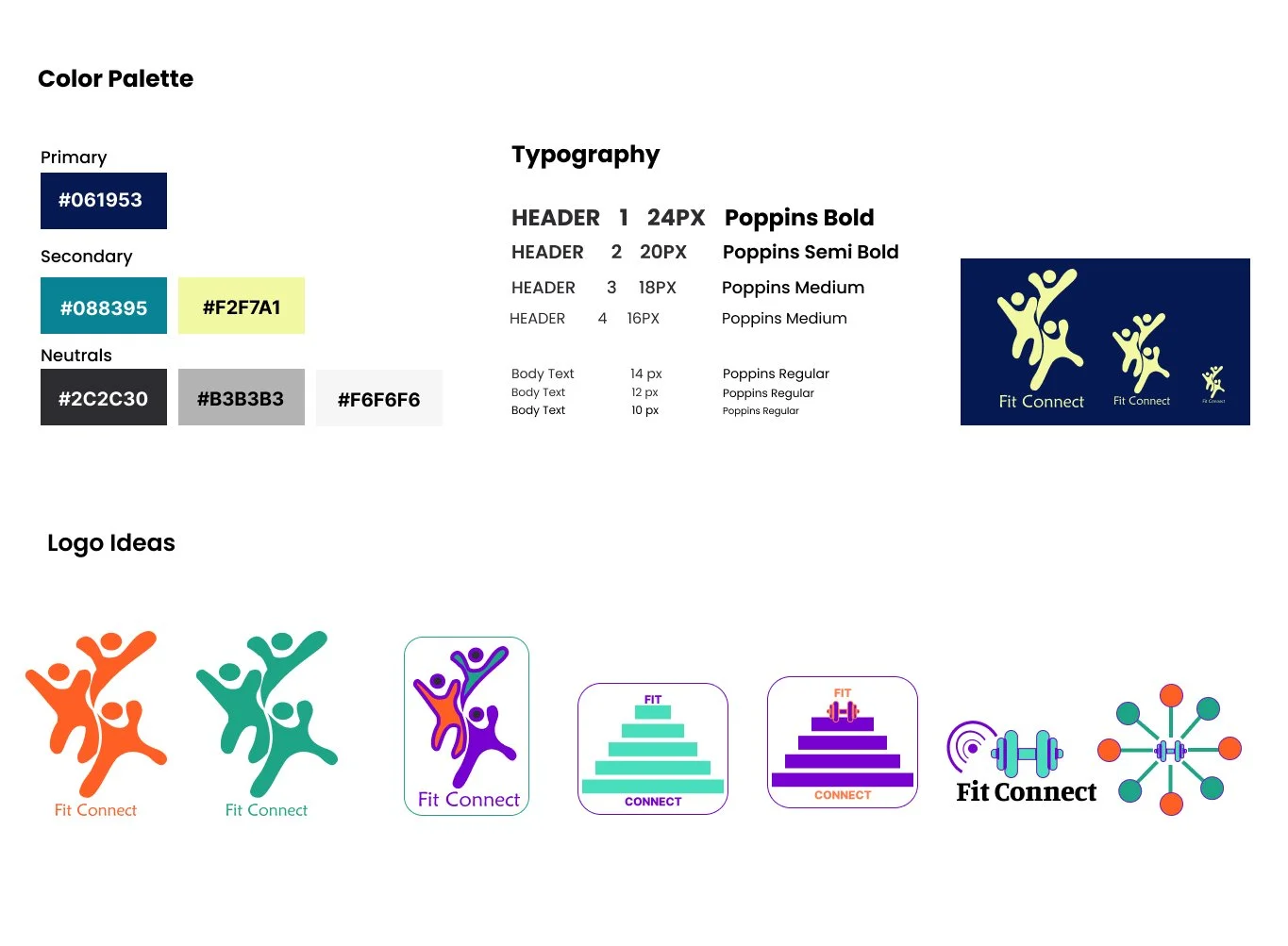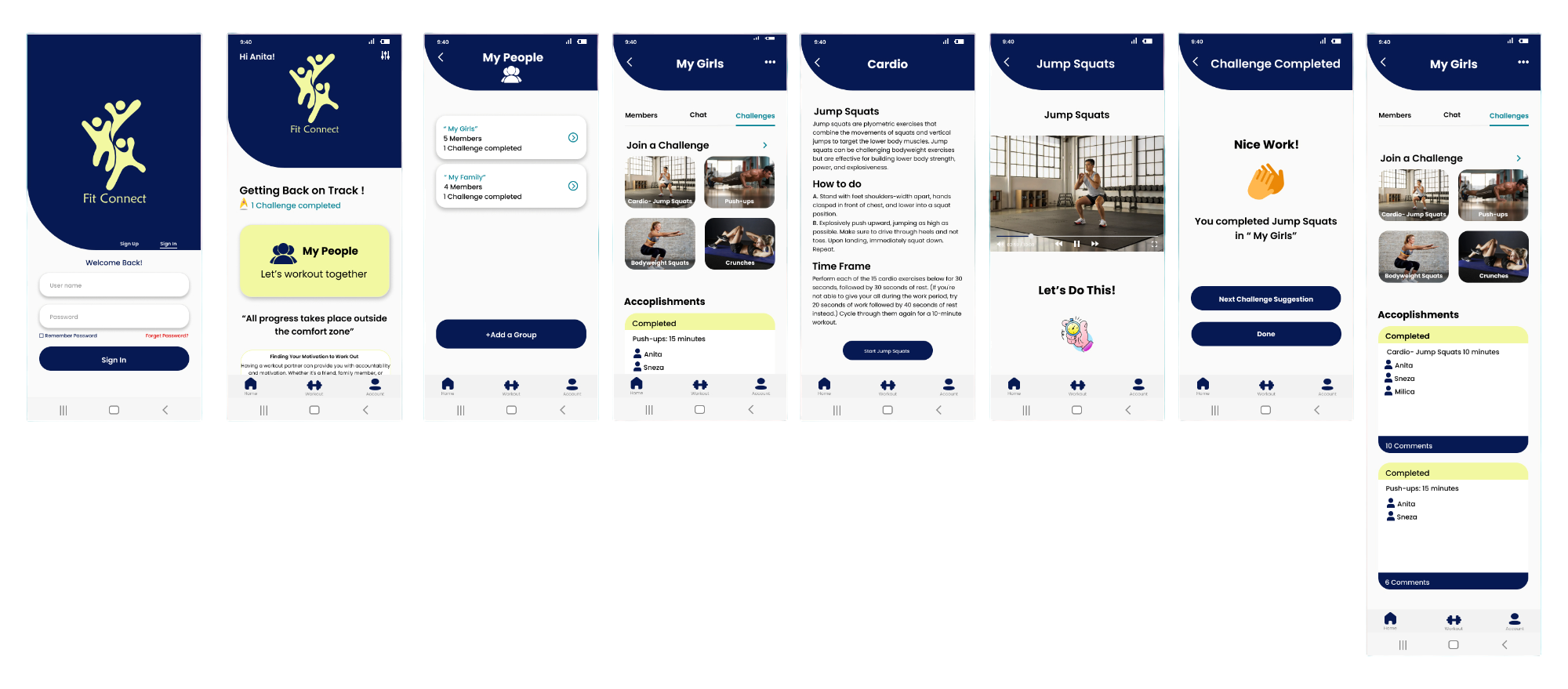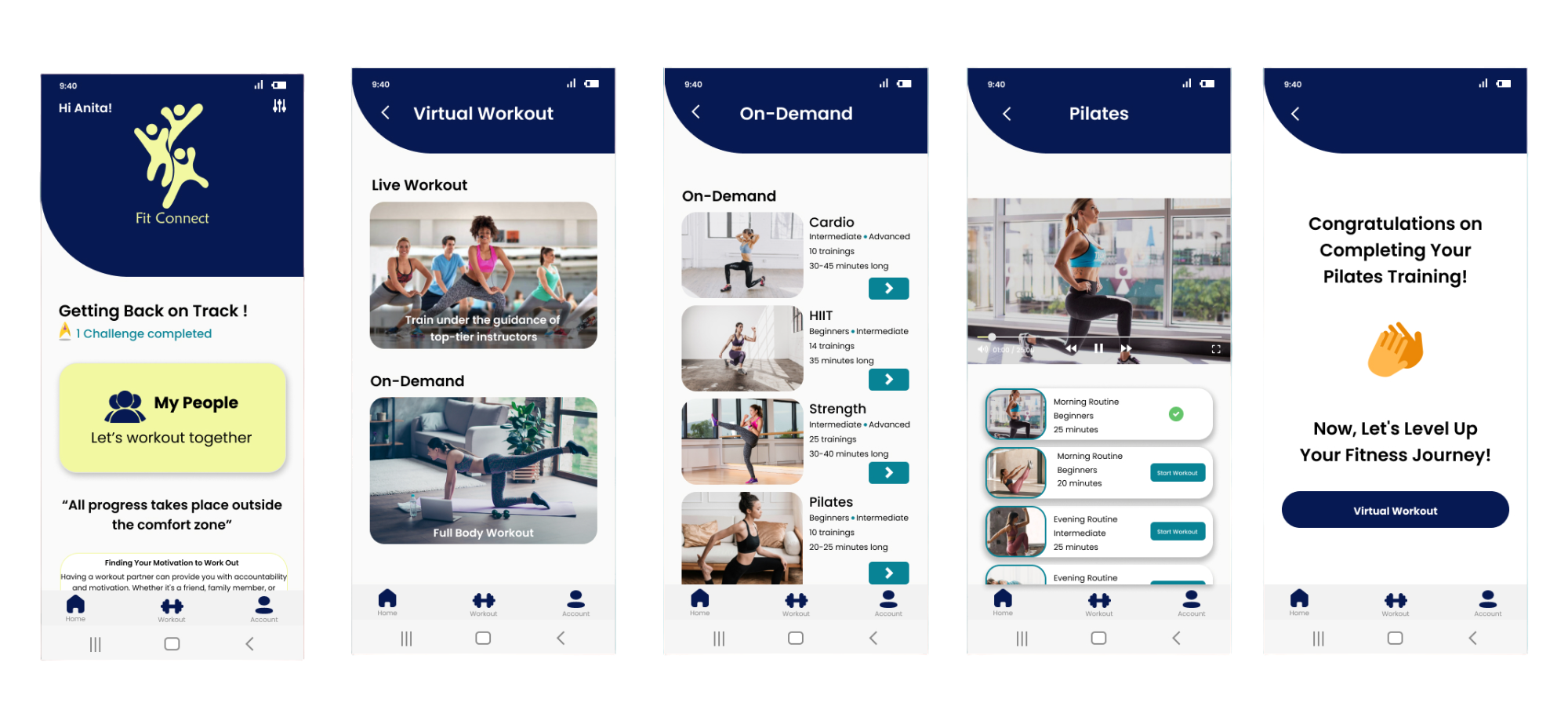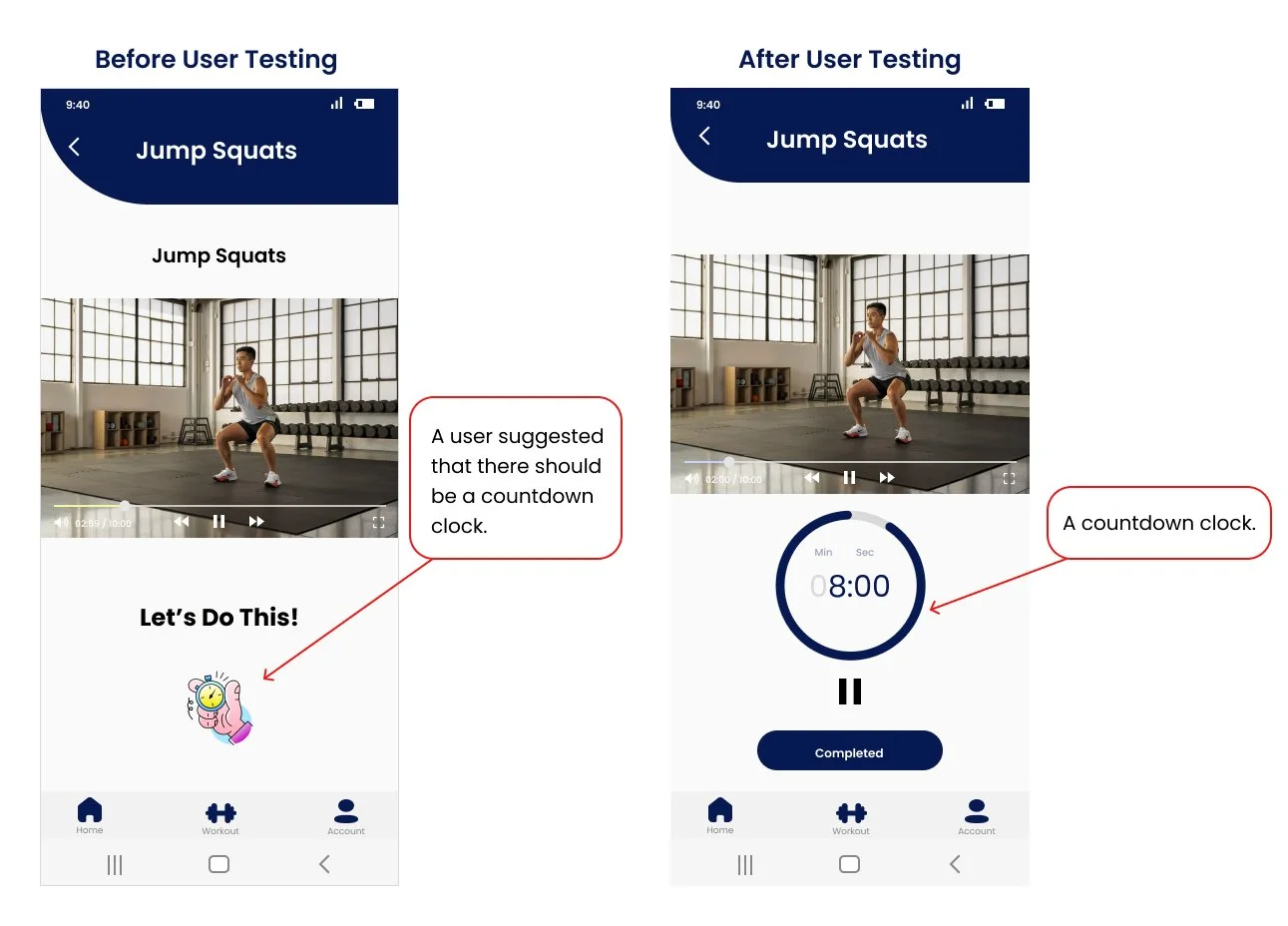Fit Connect
Project Overview
This project aimed to create a mobile fitness app to support users with at-home training routines. Many individuals struggle with motivation, consistency, and variety when working out at home, especially beginners. This app provides a supportive community, tailored workout options, and motivational tools to help users maintain a regular exercise regimen.
The Problem
The goal was to design an engaging fitness app that not only helps users meet their goals but also creates a supportive, encouraging community. The app addresses the most common obstacles of at-home fitness: lack of motivation, limited exercise variety, and insufficient support.
My Role
I was responsible for the entire project cycle:
Conducting research
Defining user pain points
Developing personas
Creating wireframes
Establishing branding
Testing
Iterating the design to a final product
Timeline: 2 weeks
Tools: Figma, FigJam
My Design Process
Empathize
Research
By combining research methods, my goal was to gain a comprehensive understanding of the problem that have people who exercise at home.
Research Objectives:
1. Identify the primary obstacles faced by individuals aspiring to maintain a consistent workout regimen at home using mobile fitness apps.
2. Evaluate the features and functionalities of existing mobile fitness apps and investigate the role of social support.
3. Explore potential strategies for enhancing the usability and accessibility of mobile fitness apps to cater to the needs of diverse user demographics, particularly beginners.
Methodologies
Competitive research to see what our competitors offer.
User Interviews to hear from users about pain points, challenges, and expectations.
Secondary research-to analyzes user reviews.
User interview
The goal of this interview was to understand users’ experience with home exercises, the kind of motivation that drives them, and their familiarity with fitness apps. I had 7 participants in total, out of which 6 were females and 1 was male. Their ages ranged from 24 to 48 years.
Overview:
Most people in the group have been training at home, but many struggle with motivation and consistency. While two participants prefer weight training, most prefer short, light workouts. They're interested in live sessions via an app, support from friends, variety in exercise, and the ability to customize their workouts. 5 out of 6 participants said that there are so many things to do after work and sometimes because of that, not enough time to work out.
Pain Points
Not enough time to work out.
Lack of variety of exercise that fitness apps offer.
They cannot customize a workout.
They don’t have motivation.
Need support.
They don’t have more than 20 minutes for a workout.
Insights
Live workout videos, a diet and exercise journal, and a trial period of 2-3 months to engage users.
Timer instructions for exercises, suggestions for series repetitions, daily meal suggestions, Zumba workouts, a calorie tracker, and options for personal trainer or live training sessions.
Users desire flexibility in workout length and frequency, as well as access to various workout types like yoga, Pilates, and aerobics.
Group support features and challenges for streak levels would help maintain motivation.
Customizable routines and timed exercises are also important, with the ability to mix and match videos easily for a personalized workout experience.
Conclusion
In conclusion, users want motivational fitness apps that offer various short exercises.
Personas
My two personas are very busy people who, due to their responsibilities, do not have enough time for training, lack motivation, and need support. They were my guide for the development of the application.
Persona 1
Persona 2
Define
During this project phase, my goal was to summarize all the data I received from the research and better define the problem through the Point of View Statement and How Might We questions.
POV Statement
1. I would like to help users stay motivated and consistent with home workouts, especially after a long day when so many other things are demanding their attention.
2. I would like to help users to have short, light workouts over intense weight training sessions. It's just easier to fit into their schedule and feels more manageable.
3. I would like to help users to have some sort of support system built into the app. Whether it's through friends or virtual trainers, having that accountability would make a big difference in their motivation.
4. I would like to help users get more variety in the exercises offered in fitness apps because they get bored easily doing the same routine repeatedly.
5. I would like to help users have the option to customize their workouts, it would be a game-changer for them.
HMW Questions
1. How can we incorporate features into the app that specifically address the motivation for home workouts?
2. In what ways can we design short, light workout routines that are both effective and appealing to users who prefer manageable sessions over intense weight training?
3. What strategies can we implement to establish a robust support system within the app, fostering accountability and motivation through friends or virtual trainers?
4. How might we integrate various exercises into the app to combat user boredom and provide ample variety in their workout routines?
5. What features and tools can we develop to empower users to customize their workouts effectively, tailored to their preferences and fitness level enhancing their overall experience and engagement with the app?
Ideate
Competitor Analysis
I went through three different fitness app platforms to understand what they offer to users. As a user, I installed all three applications on my phone and explored them thoroughly. After that, I researched all available reviews and other relevant information related to these three fitness applications online.
To convey and facilitate the understanding of the user, I created an Affinity Map to highlight pain points and expectations. I group them in 5 sections. It turned out that users have the biggest problem with motivation and the time they don't have enough for training. What most would like is the possibility of customizing training.
Choosing the key features for a fitness motivation app wasn't simple amidst so many options available. However, I had to focus on the most essential ones. Our app provides support, motivation, and short training sessions for users. The most important feature is "My People," which allows users to communicate and train together. Live training sessions are also crucial because they give users a sense of being part of a team working together and it is part of Virtual Workout feature.
Due to time constraints, it was not possible to implement all features, so I had to focus on four and after that decision, I made a site map. The sitemap helped me visualize the future motivational fitness app.
Since motivation is one of the biggest issues for people who work out at home, the first user flow shows the step-by-step completion of a collaborative group challenge. The group challenge is intended to provide support among group members rather than creating a competitive environment.
Besides motivation, another big problem is the lack of time for training. For this reason, the application will have a large selection of short training sessions. Through this flow, the user will choose on-demand training and do pilates training through a virtual workout.
Lo-Fidelity wiferfame testing
Concept testing of wireframes is essential because we can determine if the project is going in the right direction. I performed usability testing before digitizing the wireframes. Method used: Sketches were provided on the Fig jam screen. I used low-fidelity wireframes. The users were asked to walk through how they would complete the task by pointing to the screens. I was able to watch the user move around the screen.
Participants: 4 participants, ages 25-47
Group Crits - 6 participants and a mentor
Task 1: Please navigate to the My People feature and complete the Cardio on Supportive Group Challenge.
Task 2:Navigate to Virtual Workout On-Demand and then choose Pilates.
Usability Test Results:
Participant feedback was positive, with no reported negative experiences or comments. Screens were user-friendly, ensuring ease of navigation and comprehension throughout. The only screen that was questionable by all participants was screen 4 at Flow 1. I received feedback that there should be one more screen added.
After iterations of my sketches, it was time to digitize the wireframes.
Branding
Core Value: Optimistic, Friendly, Inviting, Modern, Minimalistic
First Version
Final Version
I initially chose the first color palette for my design, but I realized that the secondary colors didn't match well with the overall look. To maintain the visual hierarchy, I switched to a new color selection that would better complement the design. I also made sure that the new palette passed accessibility testing to ensure that everyone could use it.
Prototyping
High Fidelity Wireframes
The prototyping phase is the stage where the project springs to life in full color, typography, imagery and is shared with users for feedback and testing.
Iterations
Through usability tests, I was able to identify four significant iterations of my initial project. For the Usability test, I had 6 participants.
High Fidelity Wireframes
After finalizing high-fidelity screens, I created a prototype for everyone to demonstrate the full user experience.
Key Takeaways:
I enjoyed working on this project, which had a timeline of two weeks. Throughout the process, I made sure to incorporate all of the usability principles to ensure that the final product was user-friendly. During the usability tests, I made sure to actively listen to feedback and implement any important changes to the Fit Connect application. This project went through several iterations, which taught me the importance of taking all feedback and user reactions into account. Every iteration was a step toward improving the project.



